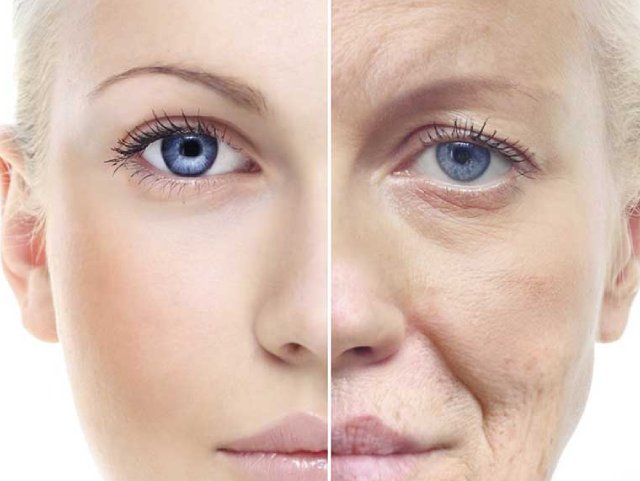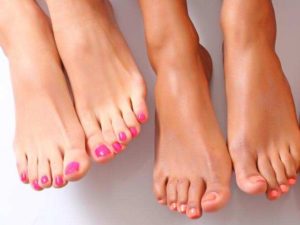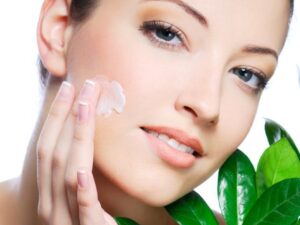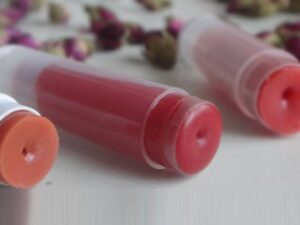Over the last couple of decades, there has been a definite change in our attitude towards ageing and body image. Various media outlets will have us believe that youth is a sign of strength, beauty, virility and vitality, and therefore ageing can no longer be viewed as a natural and acceptable change. Our age is first reflected on our face, and our face also happens to be our identity, our image and our “introduction” to the world.A relaxed, refreshed, symmetrical and youthful face will radiate an aura of good health, and send across positive and lovable vibes.
Across the world, as health and economies improves, life expectancy has been increasing. More and more countries now have a growing population of middle-aged and elderly individuals. This has created an enormous demand for anti-ageing and skin rejuvenation treatments. Unfortunately, this has also lead to a boom in the number of inexperienced and unskilled aestheticians who are in to make a quick buck. A good Dermatologist and Plastic Surgeon will individualize your treatment schedule based on your age, ethnic background, degree of skin damage, your psychological make-up, and even your budgetary constraints. A responsible doctor knows which patient needs to be turned down or discouraged, and which individual must be referred for psychological counselling.
What changes does the skin undergo as we age? The surface of our skin develops blotchy pigmentation, areas of redness, scars and open pores. You may notice the appearance of unsightly moles, freckles, skin tags and blood vessels. The deeper layer of the skin forms fine wrinkles, which over time, progress to form deep wrinkles. The skin loses its ‘snap’ and elasticity, and begins to sag. We lose fat from our face and the bones of our skull begin to shrink, making our face look sunken and asymmetrical. The hair on our scalp begins to grow thin and grey, older women may notice hair growth on their chin and cheeks, our lips lose volume and look pursed and angry, and our eyes show lines and bags and dark circles. There is an overall “droop”, especially in the middle of our face, and the neck loses its firmness. Middle-aged women do not feel confident leaving the house without any make-up on. And elderly women can no longer use any foundation as their make-up will now begin to crack and cake.
The ageing body develops pockets of sagging, cellulite and excess fat accumulation, especially under the chin, on the arms, flanks and abdomen.
Pregnancy and childbirth leave their own “trophies”, otherwise known as stretch marks in plain language.
Ageing is more dramatic among individuals who have spent a lot of time outdoors in their youth. Stress, smoking, heavy drinking, poor nutrition, frequent weight fluctuations and poor sleep patterns are other causes of early ageing.
As Douglas MacArthur famously quoted, “Age wrinkles the body. Quitting wrinkles the soul”. Most of us don’t FEEL as old as we look. Developing a healthy skin care routine early on in life, is the first step towards delaying the ravages of time.
In the second decade of life, it is important to follow the mantra of “cleanse, tone, nourish (moisturize) and protect (sunscreen)”. Go easy on the sunbathing and tanning beds. Live a healthy lifestyle, follow the right diet, drink 2-3 liters of water everyday, get 7-8 hours of sleep every night, and say no to tobacco, alcohol and substance abuse. Your eyes always give away your age, so invest in a pair of good quality sunglasses with Polaroid and UV filters.
In the third decade of life, one needs to start using age-delaying moisturizers which contain antioxidants like Vitamin C and Vitamin E, fruit acids (also known as Alphahydroxy acids or AHAs), peptides and growth factors (look for these key words in the ‘ingredient list’ when you shop for skin care products). Take vitamins rich in omega fatty acids, antioxidants and idebenone. Alternate between a refreshing chemical peel and a skin polishing microdermabrasion every month, to keep away pigmentation, fine lines, adult acne and open pores. A nonablative radiofrequency treatment done every 3-4 months keeps the skin firm and taut. These treatments are safe, effective, non-invasive and have minimal to no downtime (time required for your skin to recover).
In the fourth and fifth decade of life, you will notice that your skin is more dry, wrinkled and losing its natural youthful glow. Change your cleanser from a gel face wash to a more creamy face wash. Use anti-ageing moisturizers containing retinol. Continue getting regular chemical peels and skin polishing. By this decade, you will also need to treat your skin to resurfacing lasers, which will banish fine lines, remove excess pigmentation, tighten your skin and encourage natural healing and rejuvenation of your skin.Resurfacing lasers, skin tightening lasers and radiofrequency devices, encourage the production of fresh collagen in your skin. This is the tissue fiber which is responsible for the youthfulness and elasticity of your skin. Nonablative lasers are safer in Asian and Meditteranean skin, though they require multiple sessions over prolonged periods of time, to maintain the skin tightening effects. A laser photofacial also keeps the skin blemish free, shrinks unsightly blood vessels and brightens the complexion.
You are now at an age where you notice that your frown, forehead lines and laugh lines have become deeper. Crows feet begin to appear at the corners of your eyes. Your lips lose their natural pout and the corners of your mouth begin to sag. These changes can make you appear tired, angry, worried or stern, even when you are not feeling any of these emotions. This is the age when most men and women notice the signs of ageing for the first time in their lives. Botox® (the popular name for Botulinum Toxin) and dermal fillers like Restylane, Juvederm and Esthelis are now becoming increasingly popular treatments to relax facial wrinkles, soften age lines and “fill out” areas of volume loss. Temporary fillers are safer than permanent or semi-permanent fillers. Dermal fillers show instantaneous results and Botox shows immediate (meaning, within 3-7 days) correction of wrinkles. Botox can also be used to tighten the jaw line, soften neck lines, slim the face and relax over-animated muscles. Fillers can also be used for brow lifts and to create fuller softer-looking lips.
These treatments involve injections to the face using a very fine needle, and an anesthetic cream is used to numb the area, so the patient remains comfortable throughout the procedure.
The idea is to only “soften” the lines, as complete amelioration of all facial lines can give the face an overstretched, frozen or unnatural appearance. Therefore, careful selection of your dermatologist is an obvious choice for these procedures. Trust only well-trained, experienced and qualified medical practitioners who stay regularly updated on these treatment techniques. In the correct hands, Botox and Fillers are amongst the safest and most successful anti-ageing treatments presently available in the market. However, these treatments are expensive and the results are temporary (meaning, you will have to undergo the treatment at regular intervals to maintain results).
After the fifth and sixth decade of life, the wrinkles and sagging are usually more severe, and will require surgical intervention at the hands of a competent Plastic Surgeon. Face lifts, thread lifts, ribbon lifts, breast lift, tummy tucks (for “mommy make-overs”), fat transplants to the face, and liposuctions must always be performed by a plastic surgeon only. Facelifts can help correct poor muscle tone, and removes excess fat and loose skin in the lower half of the face. Endoscopic facelifts are now becoming increasingly popular due to the minimum trauma involved and faster healing time. Beware of experimental and unproven treatments like lipolysis or mesotherapy.
For unsightly moles, bumps, warts and skin tags, your dermatologist will either use a Carbon dioxide laser or radiofrequency ablation to vaporize them without any bleeding or scarring.
The ageing eyes – Your peepers are the windows to your soul, and they also age the earliest. As you grow older, your eyes start to develop bags or dark circles, show wrinkles, and your eyebrows and eyelids begin to droop. It is important to start using under eye creams from your late 20s to slow down these changes. Botox can remove crow’s feet and recreate the youthful arched eyebrow. Fillers can fill sunken eyes, and a surgery called ‘the blepharoplasty’ can remove eye bags and fix droopy lids.
The ageing mouth – As men and women age, their lips tend to lose volume, the youthful pout is lost, lines begin to appear on the upper lip, and the corners of the mouth begin to droop, to give one a tired and melancholy look. Filler implantation can restore the natural pout and cupid’s bow of the lip, and lift the corners of the mouth. Very small amounts of Botox can also relax the droop of the mouth and remove perioral wrinkles.
The ageing hands and feet – Our hands and feet are exposed to a lot of chemicals, detergents, harsh weather, dirt and grime. Even the most meticulous woman may forget to apply sunscreen and moisturizer to her hands and feet. As a result of this, a person’s wrinkly and blotchy hands and feet can give away their age, even when the face is spotless thanks to years of care and protection! Do not forget to apply sunscreen on your extremities, and use moisturizers meant for the hands and feet. These products usually contain urea, salicylic acid or glycolic acid to exfoliate tough dead skin, and encourage the formation of new healthy skin. To keep your tootsies looking fresh and clean, get regular manicures and pedicures, wax packs and exfoliating treatments with pumice, oxygen bleaches and fruit acids. Nibble fish pedicures don’t just keep your feet super-soft, they can even treat certain skin ailments like eczema and psoriasis.
Unwanted facial hair in women usually appear after menopause due to a drop in the level of female hormones in the blood. Laser hair reduction is now replacing conventional hair removal methods like waxing and threading, due to its long lasting results and hair thinning benefits. While Nd:YAG and Diode lasers work best on black and brown hair, blonde hair can be treated using Ruby lasers, while electrolysis is still the best bet with grey hair. Middle aged men and women can also using hair growth medications like Rogaine® to combat hair thinning and balding.
In conclusion, there is a wide range of treatments now available to repair, relax, restore, resurface and redrape the ageing skin. Meet more than one dermatologist to discuss your options and work with a doctor with whom you share the best rapport. Be open to the idea of a psychological evaluation before you take the big step. And finally, do it for the right reasons. A nip or a tuck will not mend a broken heart and may not get you that dream job. A well informed and realistic patient is ultimately the most satisfied patient.




